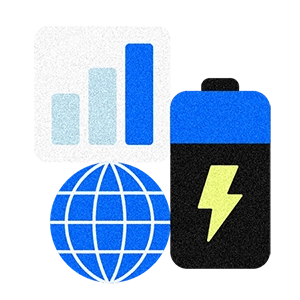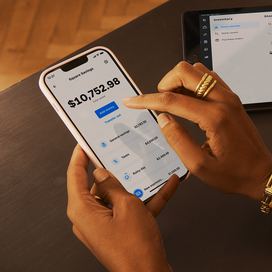Table of contents
Do you ever struggle to figure out where your business income went? Categorizing your business expenses in a trackable way allows you to see what your funds are being used for and to make better business decisions.
It can also help you determine what business deductions you are eligible to claim at tax time. As a small business owner, you want to claim every allowable tax deduction to lower your tax bill and maximize cash flow. Properly tracking and categorizing deductible expenses helps you keep good records for yourself or your accountant, making tax time a breeze.
If you’re not sure where to start, this article covers some common business expense categories and how to know whether an expense is deductible or not, and provides some tips for tracking them.
The business expenses list every business owner needs
Creating business expense categories helps you understand which expenses you can deduct and which you can’t. In addition, if you have a bookkeeper or tax preparer handle your taxes, categorizing your expenses using a chart of accounts saves time and money on income tax preparation.
The types of expenses you deduct will vary depending on your industry and whether you work from a commercial office space or your home office. However, here’s a list of common business tax deductions:
- Rent. Any space you rent to conduct business may be tax deductible. This includes a brick-and-mortar retail space, office building, warehouse, or a portion of your residence.
- Salaries. Categorize all salaries you pay, whether hourly pay or annual salaries. In addition, include bonuses, commissions, and any money paid to children and spouses to help you conduct business.
- Advertising. Include any expenses incurred to advertise your business. This may include business cards, flyers, and social media advertising. It also includes money paid to marketing firms to help promote your business.
- Startup costs. You can deduct up to $5,000 of business startup costs, such as legal and filing fees and conducting product or market research.
- Depreciation. If you have significant assets with a life longer than one year, you can write off a portion of the business asset’s expense over a predetermined number of years.
- Insurance and employee benefits. Any benefits you provide your employees, such as workers’ comp, health insurance, and retirement plans, go in this category.
- Business insurance. Keep track of any insurance premiums you pay to protect your business, including business liability insurance and workers’ compensation.
- Licenses or permits. If your business requires specific licensing or permits to operate, you can deduct the cost of obtaining the certification for you and your employees.
- Continuing education. Any money spent on business-related continuing education (required to maintain certification or not) for your industry should be included in this category. Include all costs of books, materials, and the course itself. If you reimburse employees for their expenses, include the charges in this category.
- Supplies and office expenses. Include any costs you incur to operate your office, including website hosting and software necessary to run your business. Also include the cost of everyday supplies such as paper, pens, sticky notes, and other office supplies.
- Maintenance and repairs. Keep track of any costs you incur for maintenance and repairs on vehicles, equipment, or the building itself.
- Vehicle use. If you use your personal vehicle for business purposes or have a car strictly for your business, you can deduct the cost of owning and maintaining it. Most taxpayers use the standard mileage rate to calculate their deductions, but you can also use your actual expenses if you keep good records.
- Professional fees. Any expenses paid for legal counsel or advice from an accountant or advisor may be tax deductible. This includes any costs you pay for a lawyer, financial advisor, or tax preparer.
- Utilities and telephone costs. Any expenses you pay to keep your business space operable may be tax deductible. This includes electric, gas, water, trash pickup, and telephone bills. If you run your business from home, you can deduct the portion of these expenses you incur for the office, not the entire house.
- Dues and subscriptions. You may be able to deduct subscriptions and dues you pay to run your business. This includes magazine and trade subscriptions and membership fees for trade associations.
- Business travel and meals. Track any business travel you or your employees do. The entire trip must be for business. If not, you must only deduct the portion of the journey that was strictly for business. You can also deduct 50% of the cost of business meals while traveling.
- Shipping costs. Include the cost of shipping, such as postage or shipping costs with other carriers. Note that you should not include the cost of envelopes and packaging, as those are office supplies. While still tax-deductible, they will fall under a different category.
- Loan interest. Any interest you pay on loans strictly for business may be deducted. This includes interest on business loans, credit cards, credit lines, and mortgage interest. You may also deduct bank fees and expenses, such as monthly maintenance or miscellaneous bank fees.
You can find more business expenses and rules for deducting them in IRS Publication 535.
How can you tell if something is tax deductible?
Deductible expenses are those that are essential to running your business. According to the IRS, they must be ordinary and necessary. Many of these may be a part of common business tax deductions.
If an expense isn’t necessary to run the business or it falls under any of the following categories, it’s not tax deductible:
- Lobbying expenses. Funds spent by organizations or individuals in an attempt to influence the decision-making of government officials. This can include anything from buying advertising space to hiring professional lobbyists.
- Political donations. Contributions of money or other value made by individuals, organizations, or corporations to politicians, political parties, or political campaigns.
- Traffic tickets. Fines incurred from speeding, running a traffic light, failure to yield, etc.
- Clothing for work. Work uniforms are an exception to this rule, as long as they’re not suitable for everyday wear.
- Commuting to and from the office. Commuting is considered a personal expense.
- Entertainment expenses. Taking clients to concerts, sporting events, and other forms of entertainment isn’t deductible.
- Business gifts exceeding $25. This limit applies per person for any business gifts given directly or indirectly during the tax year.
- Travel expenses for companions (unless employees). The costs for bringing your spouse, child, or friend on a business trip aren’t deductible, although your expenses are.
- Anything illegal. This should go without saying, but it bears repeating. For example, you can’t deduct bribes to government officials or the cost of hiring an arsonist to burn down your building so you can collect the insurance money.
How do you keep track of business expenses?
Keeping track of business expenses can seem overwhelming, especially with the many expense categories available on tax returns.
With a little organization and time, though, you can categorize your business expenses quickly and efficiently. Here’s how:
Have a separate business bank account.
Don’t combine business and personal accounts. Instead, open a separate business bank account and only use it for business transactions. Not only is it easier to find your tax-deductible business expenses, but you limit your personal liability by keeping business and personal funds separate. With a free Square Checking1 account and debit card, you can access, spend, and manage your money as soon as you make a sale.
Open up a dedicated business savings account.
In addition to your business checking account, consider opening a business savings account to set aside funds for taxes, emergencies, or future investments. It’s a simple way to stay financially prepared and build a financial cushion as your business grows. With a free Square Savings2 account, you can automatically set aside a percentage funds with every sale and organize your funds into folders for long term savings or everyday expenses – all while earning 1.00% APY.

Use a business credit card.
Avoid using your personal credit card for business expenses, as it can be hard to differentiate which expenses are which — especially if you wait until tax time.
Keep a separate business credit card to monitor expenditures and ensure you deduct every allowable business expense. You can pull statements and run reports on your credit card to ensure you’ve captured each one.
Keep digital copies of receipts.
Make it a habit to scan your receipts after every purchase. Then, store the records on your computer or in the cloud for safekeeping. It’s much easier to reference your expenses at tax time if you don’t have to rifle through a shoebox full of receipts.
Use accounting software (or outsource your bookkeeping).
Using accounting software that links with your bank account for automatic importing ensures you don’t miss any transactions and that your expenses are properly categorized. Of course, you should manually review the transactions to ensure they’re in the proper category, but it takes much less time to reconcile this way than manually entering every transaction.
If you don’t have enough time to handle your own bookkeeping or it just feels daunting, you can outsource it to an online bookkeeping service like Bench. They use proprietary software and a dedicated bookkeeping team to import bank statements, compile financial transactions, and generate financial statements every month. It’s the perfect way to stay in your zone of genius and work on growing your business instead.
Taking advantage of every tax-deductible expense will increase your business’s cash flow and make it easier to operate. Automating the reconciliation of your expenses is the best way to ensure you get every deduction available.
If the IRS, filing deadlines, or a backlog of bookkeeping is keeping you up at night, our partners at Bench are here to help. Get your bookkeeping and taxes done in one place with Bench Accounting. Their experts work together to organize your books, provide unlimited tax advisory, and maximize your income tax returns so you can file with confidence. In fact, they can take care of your filing too. Try them out for free today.
¹ Instant availability of Square payments. Funds generated through Square’s payment processing services are generally available in the Square Checking account balance immediately after a payment is processed. Fund availability times may vary due to technical issues.
ACH transfer fund availability: Instant availability does not apply to funds added to the Square Checking account via ACH transfer. ACH credit transfers to your account may take 1–2 business days.
² Square Debit Card is issued by Sutton Bank, Member FDIC, pursuant to a license from Mastercard.
³ Instant transfer requires a linked bank account or supported debit card and costs a fee per transfer. Funds are subject to your bank’s availability schedule. Minimum amount is $25 and maximum is $10,000 in a single transfer. New Square sellers may be limited to $2,000 per day. Fund availability times may vary due to technical issues.
⁴ With early deposit access, Block, Inc. may make incoming electronic direct deposits made through ACH available for up to two days before the scheduled payment date. Not all direct deposits are eligible. Early availability of direct deposits is not guaranteed and may vary from deposit to deposit. Early deposit access is automatic and there is no fee.
5 Cash deposited into your Square Checking account is generally available in your checking account balance immediately after a deposit is processed. Fund availability times may vary due to technical issues.
VanillaDirect Pay is provided by InComm Financial Services California, Inc. and by InComm Financial Services, Inc. (NMLS# 912772), which is licensed as a Money Transmitter by the New York State Department of Financial Services. Terms and conditions apply.
2.1 Savings accounts are provided by Square Financial Services, Inc. Member FDIC. Accrue annual percentage yield (APY) of 1.00% per folder on folder balances over $10. APY subject to change, current as of 2/18/2025. No minimum deposit is required to open an account. Accounts will not be charged monthly fees. Accounts are FDIC-insured up to $2,500,000. Pending balances are not subject to FDIC insurance.
2 The rate of our savings account is more than 2x the national average of 0.41% APY, based on the national average of savings accounts rates published in the FDIC Weekly National Rates and Rate Caps accurate as of 1/21/2025
3 Square Checking is provided by Sutton Bank, Member FDIC. Square Debit Card is issued by Sutton Bank, Member FDIC, pursuant to a license from Mastercard International Incorporated, and may be used wherever Mastercard is accepted. Funds generated through Square’s payment processing services are generally available in the Square checking account balance immediately after a payment is processed. Fund availability times may vary due to technical issues. Checking Accounts are FDIC-insured up to $250,000.
© YYYY Square, Inc. and/or Square Financial Services, Inc. All rights reserved.
![]()










